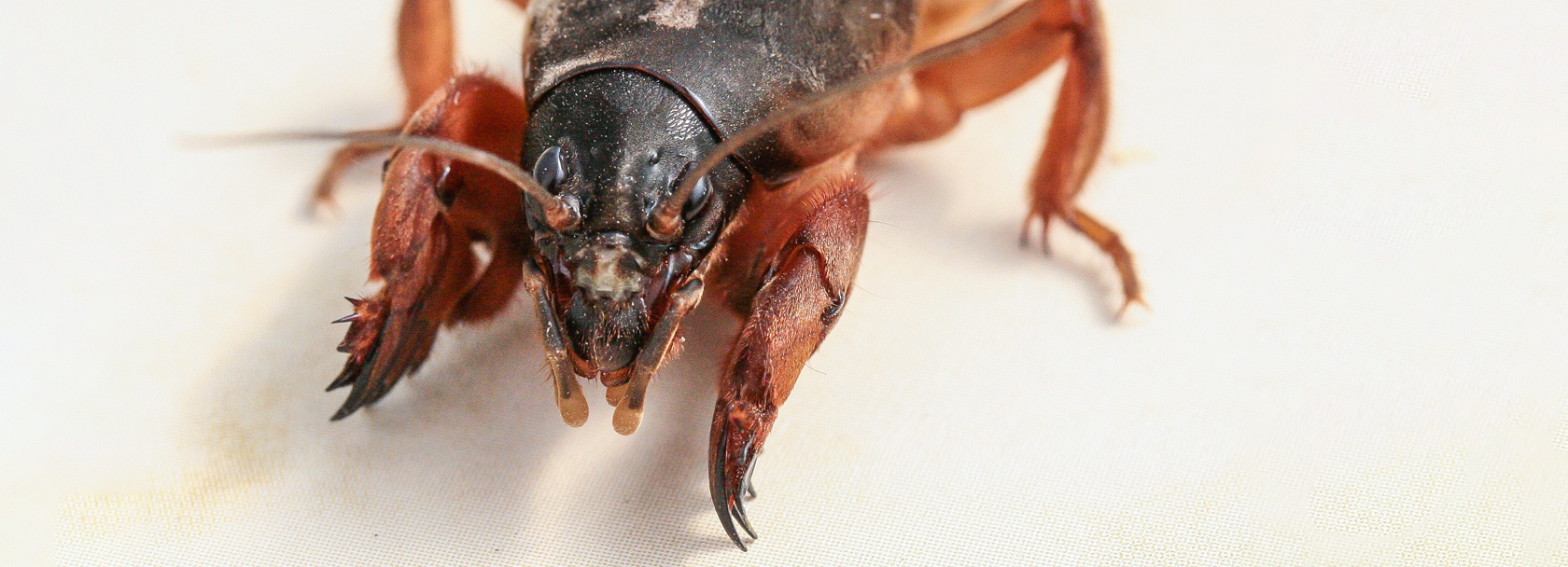Mole cricket
Control mole crickets biologically
Gryllotalpa Gryllotalpa
Mole crickets, also called werren, are brown crickets whose front legs serve as digging shovels. They live underground in self-dug earth tubes and belong to a family of grasshoppers (lat. Orthoptera). Adult mole crickets reach a size between 35 and 50 mm.
The white larvae look like ants. Mole crickets are crepuscular and nocturnal.
The life span of a mole cricket is 3 years. Mating takes place in May. Females then build several dove-sized nests at a depth of about 10 cm, in each of which they lay up to 300 eggs. The larvae hatch after 1-2 weeks and leave the nest after 3-4 weeks. They overwinter deep in the soil and molt twice in the spring before growing into adults.

Damage caused by mole crickets
The adult mole cricket causes damage by eating roots and digging. Finger-thick horizontal burrows are excavated shallowly below the soil surface. Typical damage patterns include rumpled seedbeds, pulled-in young plants, and gnawed roots and tubers. Vegetables, potatoes and lawns are the main crops attacked.
Control mole crickets with nematodes
Nematodes are natural enemies of mole crickets. The nematode species Steinernema carpocapsae specializes on adult mole crickets, among others. The nematodes enter their hosts through natural body orifices, kill them, and use them for their own feeding and reproduction.
